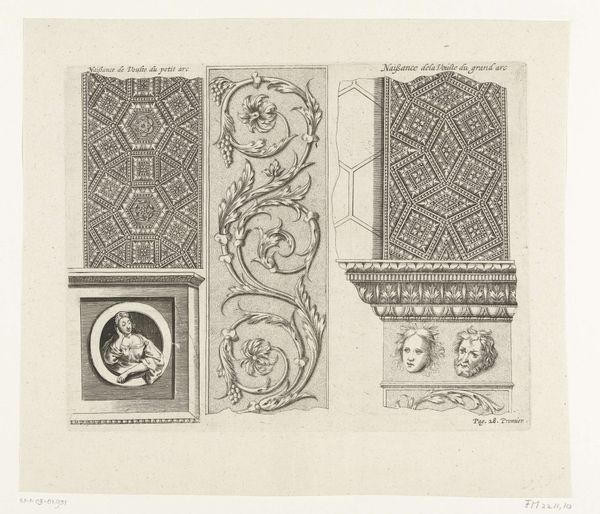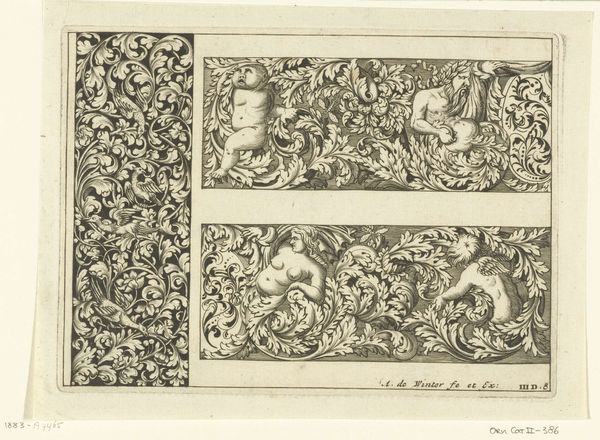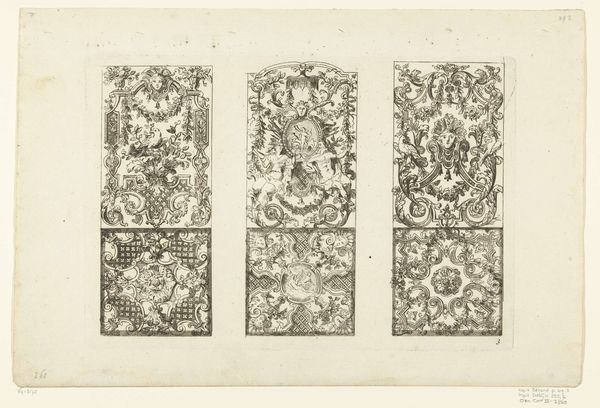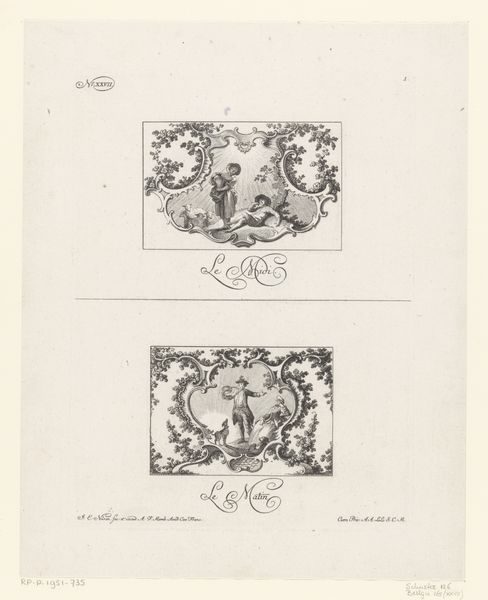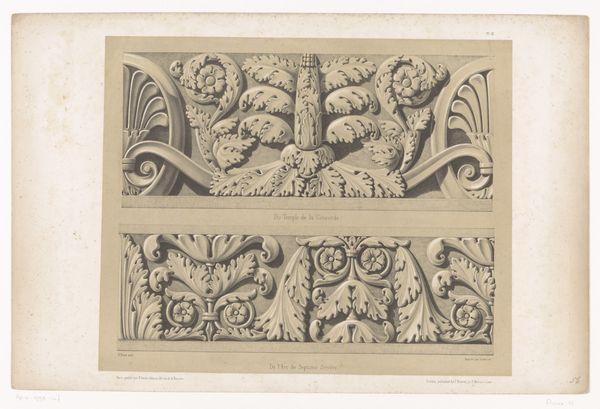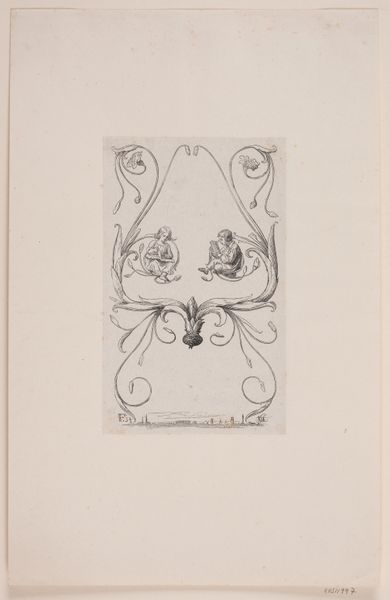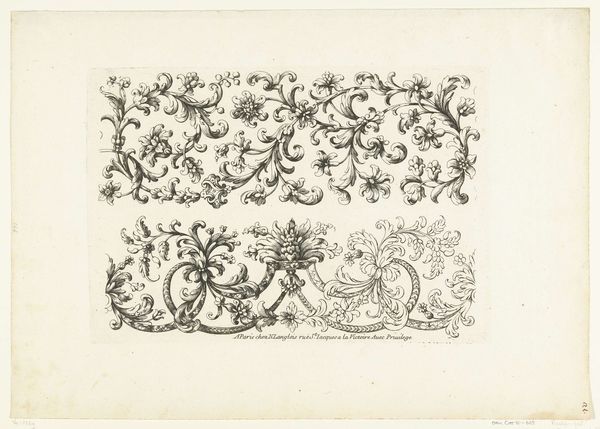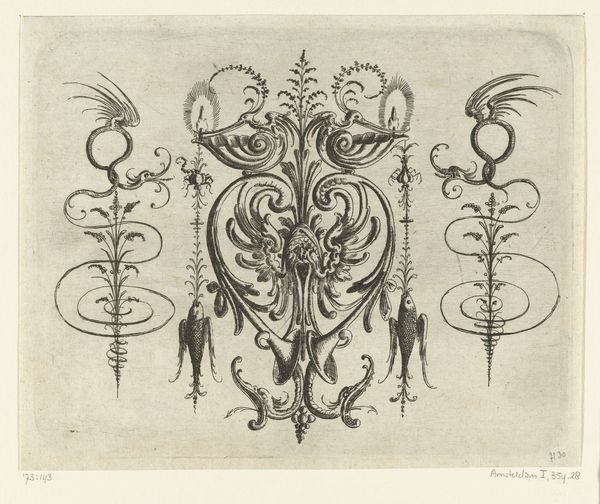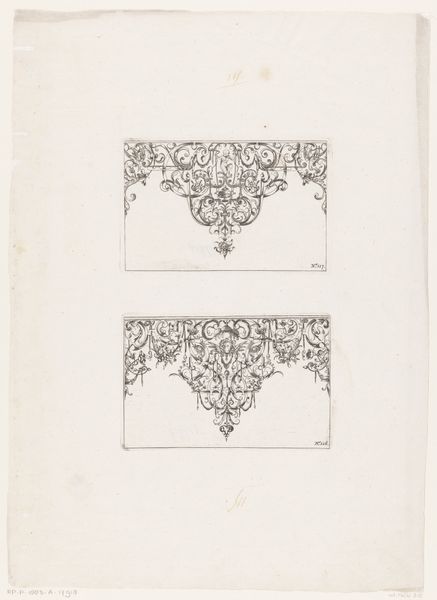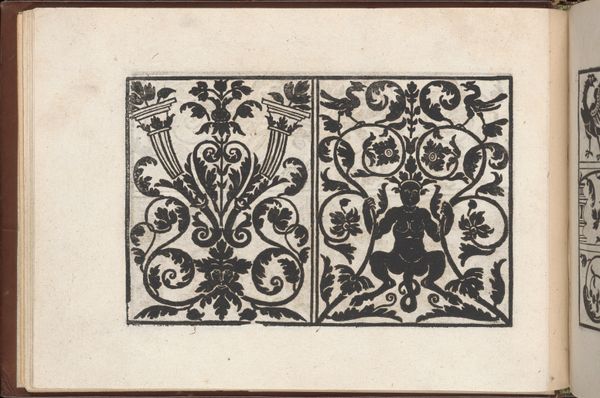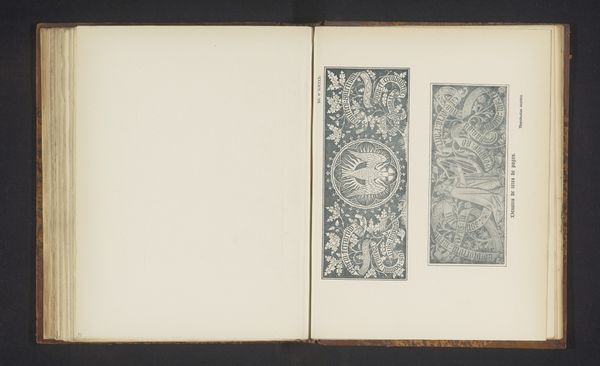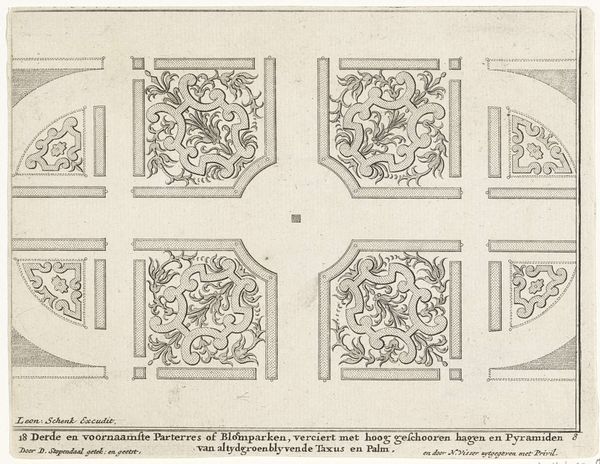
ornament, print, engraving
#
ornament
# print
#
old engraving style
#
form
#
11_renaissance
#
line
#
decorative-art
#
engraving
Dimensions: height 211 mm, width 136 mm, height 131 mm, width 97 mm, height 93 mm, width 124 mm
Copyright: Rijks Museum: Open Domain
Editor: Here we have "Bladornamenten," or Leaf Ornaments, an engraving from the 16th or 17th century by Marco Dente, housed at the Rijksmuseum. I'm struck by the incredible detail rendered in a simple print. How would you interpret the visual structure of these designs? Curator: Notice the deployment of line, Editor. The artist manipulates line weight and density to suggest depth and volume. Consider, for instance, how hatching and cross-hatching in the first panel delineate the muscular form of the figure and create the illusion of three-dimensionality within the foliage. What do you make of the repetition of forms across the three panels? Editor: Well, I see a consistent use of organic shapes. The leaf motif is central, but its expression changes—sometimes twisting, sometimes branching—yet always remaining a cohesive element. Is this a reflection of the artistic principles of the time? Curator: Precisely. The ornament prints were designed as models. They emphasize an adaptable artistic vocabulary, enabling variations within a defined structural framework. Focus on the negative space; how does it interact with the engraved lines? Editor: The negative space allows the complex patterns to breathe. It prevents the details from becoming overwhelming and accentuates the positive forms. It seems essential to the overall rhythm of the design. Is that something engravers consider often? Curator: It is integral to understanding their formal approach, yes. The deliberate interplay between line and void shapes our perception. Notice too the tension between symmetry and asymmetry, how does this tension effect your viewing experience? Editor: Now that you mention it, I realize that this balance gives it life and prevents it from becoming static. It guides the eye. I learned a lot, especially concerning line and the function of ornament prints! Curator: As did I! These discussions remind us to seek out the underlying structures and forms of the artworks.
Comments
No comments
Be the first to comment and join the conversation on the ultimate creative platform.
